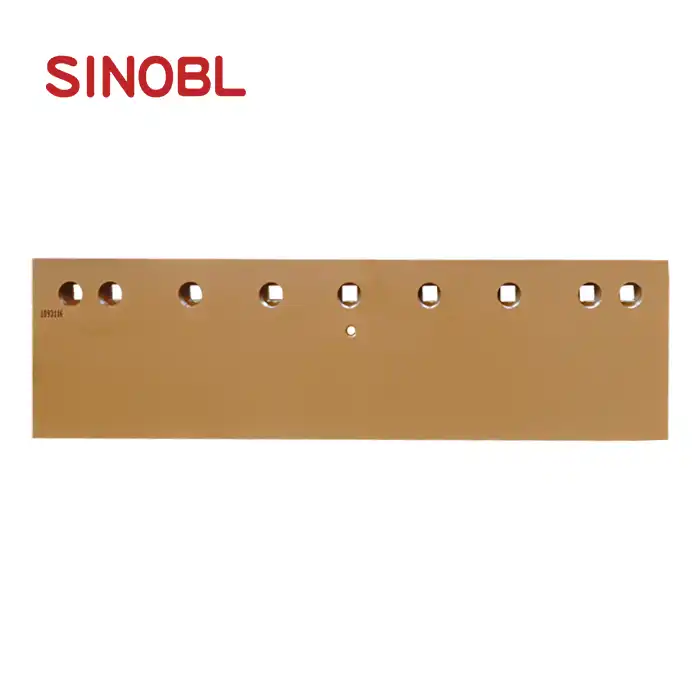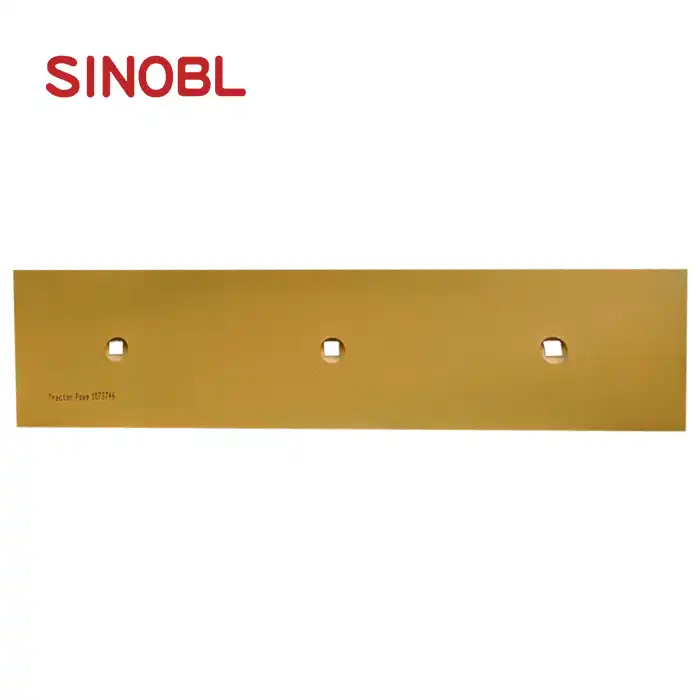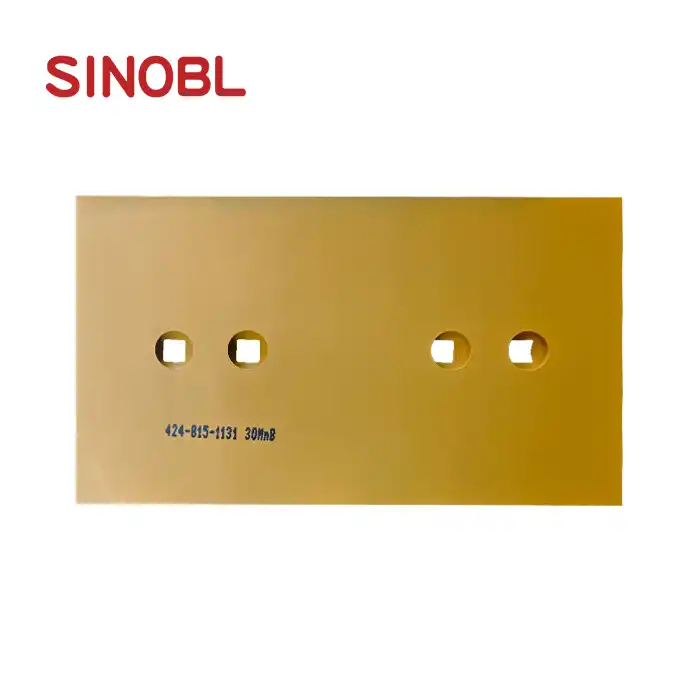What Makes the Grader Blade 5D9556 Durable?
In the demanding world of heavy construction and earthmoving operations, equipment durability directly impacts project success and operational costs. The Grader Blade 5D9556 stands as a testament to engineering excellence, combining advanced materials science with precision manufacturing to deliver exceptional longevity in the most challenging environments. This comprehensive analysis explores the fundamental characteristics that make the Grader Blade 5D9556 exceptionally durable, examining its material composition, manufacturing processes, and real-world performance capabilities. Understanding these durability factors is crucial for fleet managers and operators who depend on reliable equipment to maintain productivity and minimize costly downtime in their operations.
Advanced Material Engineering and Composition
High Carbon Steel Foundation for Maximum Strength
The Grader Blade 5D9556 derives its exceptional durability from a carefully engineered high carbon steel foundation that provides superior structural integrity under extreme operational conditions. High carbon steel contains elevated carbon content levels, typically ranging from 0.6% to 1.7%, which significantly enhances the material's hardness and wear resistance properties compared to conventional steel alternatives. This advanced metallurgical composition allows the Grader Blade 5D9556 to maintain its cutting edge geometry even when subjected to abrasive materials like granite, hardpan soil, and rocky terrain that would quickly deteriorate inferior blade materials. The molecular structure of high carbon steel creates a dense, tightly bonded matrix that resists deformation and edge rounding, ensuring consistent grading performance throughout extended operational periods. Additionally, the inherent toughness of this material composition enables the Grader Blade 5D9556 to absorb impact loads without developing stress fractures or catastrophic failures that could compromise equipment safety and operational continuity.
Heat-Treated Boron Steel Technology
The integration of heat-treated boron steel technology represents a revolutionary advancement in the Grader Blade 5D9556's durability characteristics, providing enhanced hardness levels that significantly extend operational lifespan. Boron steel undergoes specialized thermal treatment processes that modify its crystalline structure at the molecular level, creating a material with exceptional hardness ratings often exceeding 500 HB (Brinell Hardness) while maintaining sufficient toughness to prevent brittle failure modes. This heat treatment process involves precise temperature control and cooling rates that optimize the steel's microstructure, resulting in a blade surface that resists abrasive wear while maintaining the flexibility necessary to absorb shock loads during operation. The Grader Blade 5D9556 benefits from this advanced metallurgy through dramatically reduced wear rates when operating in highly abrasive conditions, translating to longer replacement intervals and reduced maintenance costs. Furthermore, the heat-treated boron steel construction maintains its hardness characteristics even under elevated operating temperatures, ensuring consistent performance during intensive grading operations where blade temperatures can rise significantly due to friction and material displacement forces.
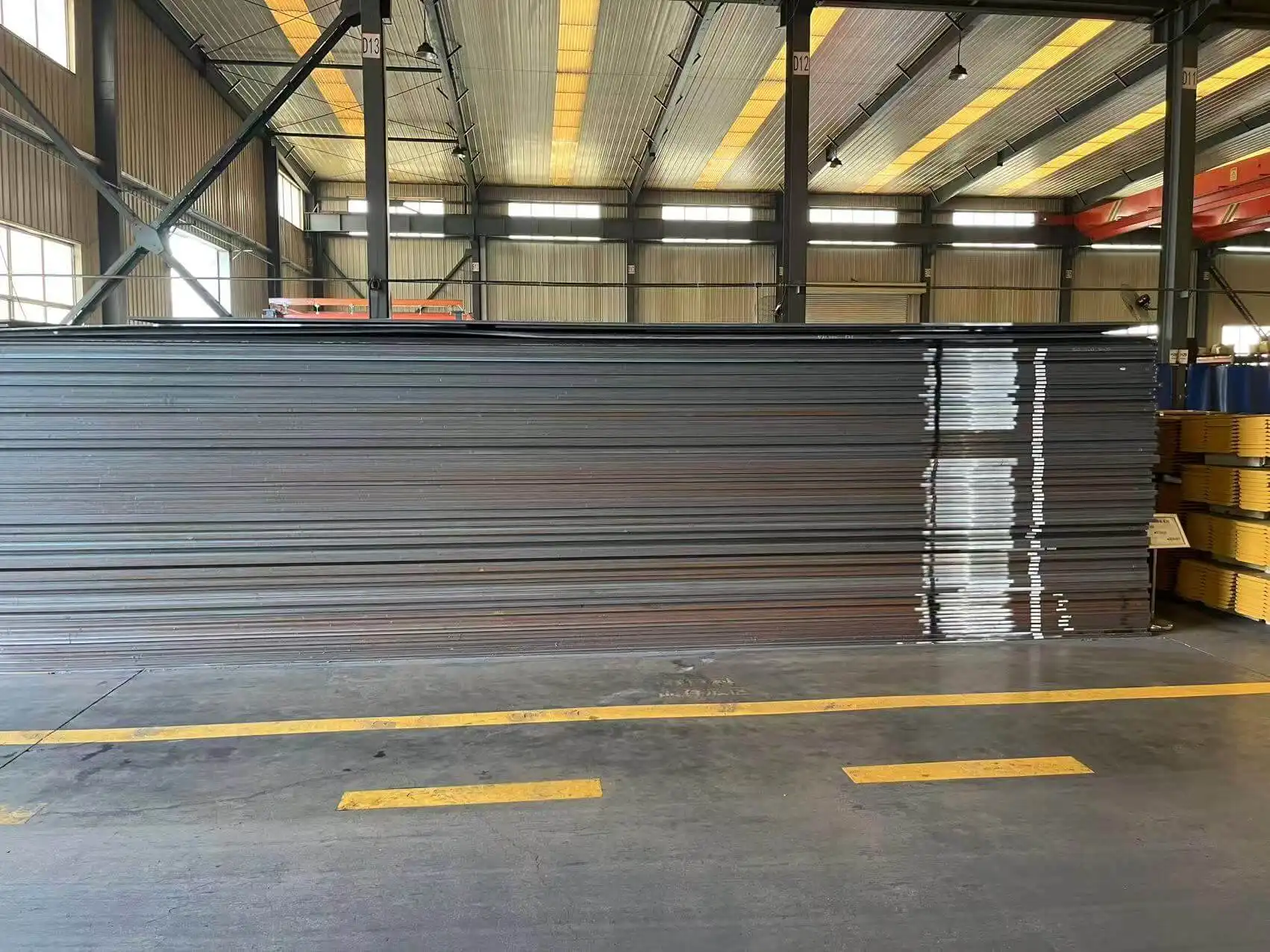
Precision Alloy Integration and Quality Control
The manufacturing process for the Grader Blade 5D9556 incorporates precision alloy integration techniques that optimize material properties throughout the entire blade structure, ensuring uniform durability characteristics from cutting edge to mounting points. Advanced metallurgical analysis and quality control procedures verify that each blade meets stringent composition requirements, with regular testing protocols that monitor carbon content, alloy distribution, and hardness uniformity across all production batches. This comprehensive approach to material quality ensures that every Grader Blade 5D9556 delivers consistent performance characteristics regardless of production timing or batch variations. The precision forging processes used in manufacturing create a refined grain structure that eliminates weak points and stress concentrators that could lead to premature failure modes. Additionally, dimensional accuracy achieved through advanced die forging techniques ensures proper fit and optimal load distribution when installed on grading equipment, preventing premature wear caused by misalignment or uneven stress distribution patterns that can occur with less precisely manufactured components.
Manufacturing Excellence and Process Innovation
Advanced Forging Techniques for Superior Strength
The Grader Blade 5D9556 undergoes advanced forging processes that fundamentally enhance its structural integrity and durability characteristics through controlled deformation and grain refinement techniques. Modern precision die forging technology applies carefully controlled pressure and temperature conditions that optimize the steel's microstructure, creating a more uniform and refined grain pattern that significantly improves both strength and toughness properties. This forging process eliminates internal voids and inclusions that could serve as crack initiation points under operational stress, resulting in a blade with superior fatigue resistance and extended service life. The dimensional accuracy achieved through precision forging ensures that each Grader Blade 5D9556 maintains consistent geometry and mounting specifications, enabling optimal performance and even wear distribution during operation. Furthermore, the forging process work-hardens the material surface, creating a naturally wear-resistant exterior layer that provides additional protection against abrasive materials while maintaining the blade's sharp cutting characteristics throughout extended use periods.
Rigorous Quality Control and Testing Protocols
Manufacturing excellence for the Grader Blade 5D9556 involves implementation of comprehensive quality control measures that verify durability characteristics at multiple production stages, ensuring consistent performance across all manufactured units. Advanced material testing protocols include hardness verification, tensile strength analysis, and impact resistance evaluation that confirm each blade meets or exceeds specified performance criteria before shipment. Dimensional inspection procedures utilize precision measurement equipment to verify that blade geometry, mounting hole positions, and thickness specifications conform to exact tolerances required for optimal equipment compatibility and performance. The quality control process includes durability stress testing that simulates real-world operational conditions, subjecting blade samples to accelerated wear testing and impact loading scenarios that validate long-term performance expectations. Additionally, final inspection procedures examine surface finish quality, edge preparation, and overall manufacturing integrity to ensure that each Grader Blade 5D9556 meets the highest standards for durability and operational reliability before reaching customers.
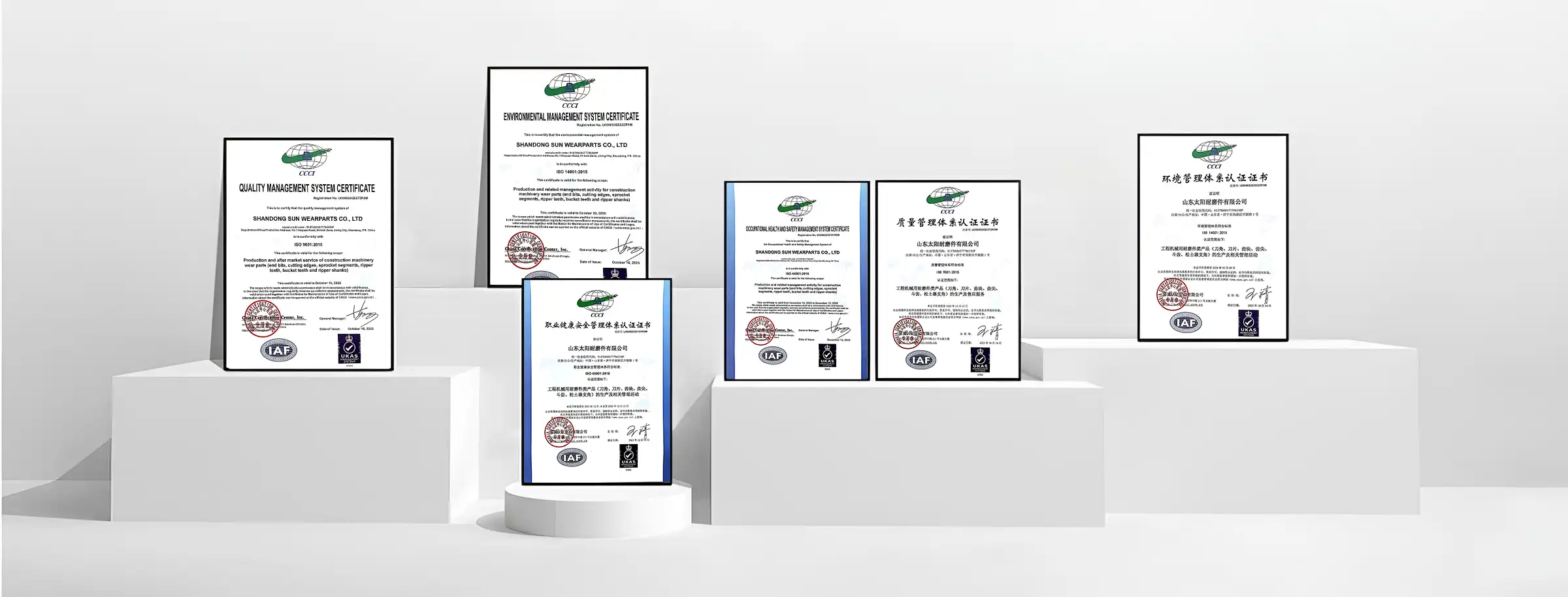
ISO9001 Certified Manufacturing Standards
The production of the Grader Blade 5D9556 operates under ISO9001 certified quality management systems that ensure consistent manufacturing excellence and continuous improvement in durability characteristics. This internationally recognized certification requires adherence to stringent process control standards that monitor every aspect of blade production, from raw material selection through final packaging and shipment procedures. The ISO9001 framework mandates regular auditing and documentation of manufacturing processes, ensuring that quality standards remain consistent over time and that any potential issues are identified and corrected before they can impact product durability or performance. Continuous improvement initiatives under this quality system drive ongoing enhancements to manufacturing techniques and material specifications that further enhance the Grader Blade 5D9556's durability characteristics. The certification also requires extensive training programs for production personnel, ensuring that manufacturing expertise remains current with latest industry best practices and technological advancements that contribute to superior blade durability and performance capabilities.
Real-World Performance and Application Versatility
Exceptional Performance in Demanding Environments
The Grader Blade 5D9556 demonstrates exceptional durability across diverse operational environments, from harsh mining conditions to precision road construction applications where consistent performance is absolutely critical. Field testing and customer feedback consistently validate the blade's ability to maintain sharp cutting edges and precise grading capabilities even when operating in highly abrasive soils containing rock fragments, clay deposits, and other challenging materials that quickly degrade conventional blade designs. The blade's robust construction enables it to handle varying load conditions without experiencing premature wear or structural deformation, making it ideally suited for applications ranging from fine finish grading to heavy material displacement operations. Operational data from customers worldwide confirms that the Grader Blade 5D9556 typically achieves service intervals 40-60% longer than comparable products, directly translating to reduced replacement costs and minimized equipment downtime. Additionally, the blade's consistent performance characteristics throughout its service life ensure that grading quality remains uniform, reducing the need for multiple passes and improving overall operational efficiency in construction and mining applications.
Versatile Application Across Equipment Types
The durability characteristics of the Grader Blade 5D9556 make it suitable for installation across a wide range of grader models and brands, providing fleet managers with a standardized solution that simplifies inventory management and maintenance procedures. The blade's robust design accommodates the varying operational demands of different grader sizes and applications, from compact utility graders used in municipal applications to large mining graders operating in the most demanding conditions. Compatibility with multiple equipment brands reduces the complexity of parts management while ensuring consistent performance characteristics across diverse fleet compositions. The blade's proven durability in various applications includes road construction and maintenance, mining operations, earthmoving projects, land grading and leveling, and snow removal operations, demonstrating its versatility and reliability across multiple industry sectors. This broad application range, combined with consistent durability performance, makes the Grader Blade 5D9556 an ideal choice for organizations operating mixed equipment fleets or those requiring standardized components across multiple operational applications.
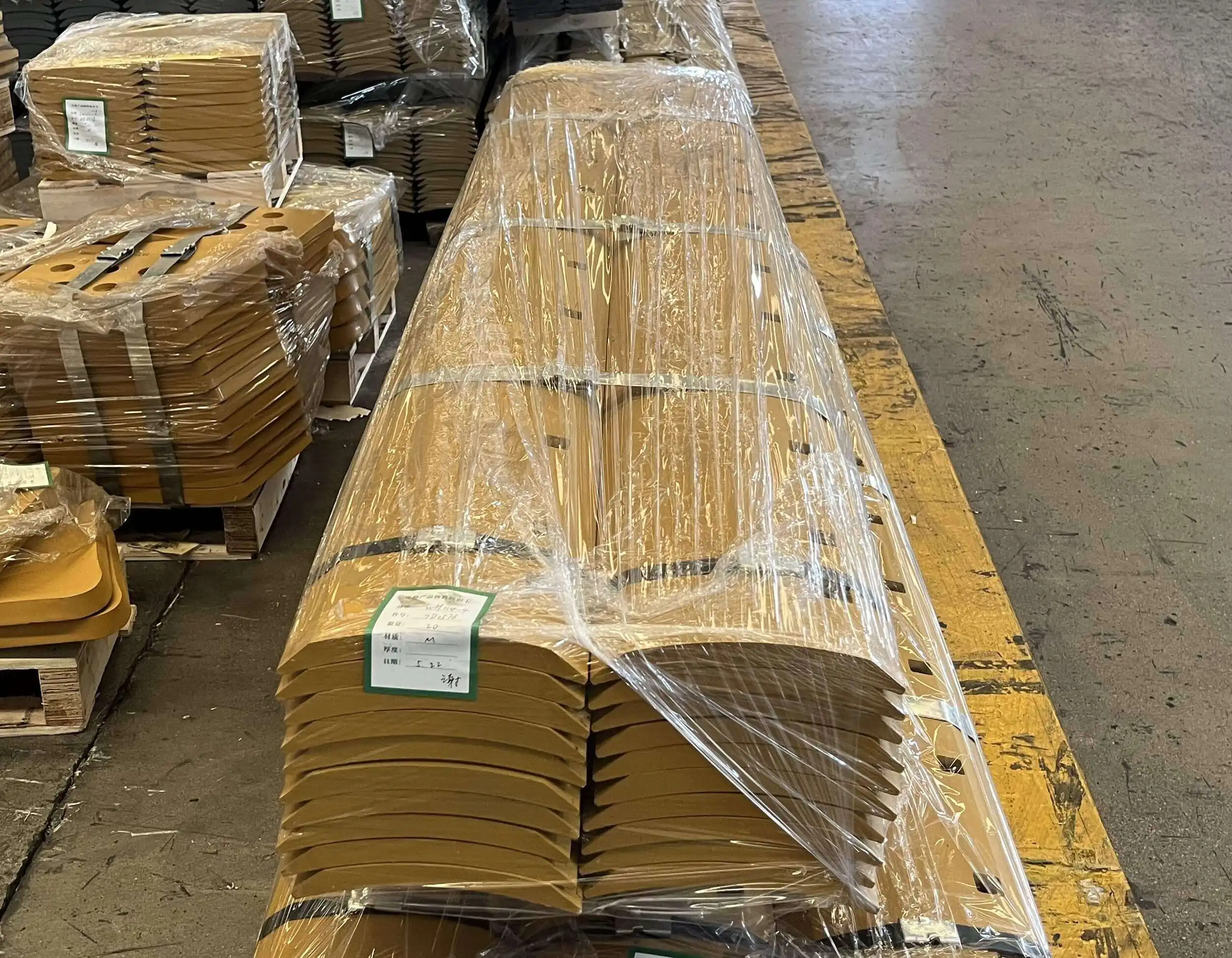
Long-Term Cost Effectiveness and ROI
The superior durability of the Grader Blade 5D9556 delivers exceptional return on investment through extended service life and reduced total cost of ownership compared to alternative blade options. Detailed cost analysis demonstrates that the blade's extended operational lifespan significantly reduces the frequency of replacement purchases, lowering both component costs and associated labor expenses for blade changes. The consistent performance characteristics maintained throughout the blade's service life reduce operational inefficiencies that can occur with inferior products that lose cutting effectiveness as they wear, ensuring optimal productivity throughout the blade's operational period. Reduced downtime requirements for blade replacement directly translate to improved equipment utilization rates and project schedule adherence, providing additional cost benefits beyond the direct component savings. Furthermore, the blade's reliable performance characteristics reduce the risk of unexpected failures that could result in costly project delays or equipment damage, providing fleet managers with predictable maintenance schedules and operational costs that facilitate accurate project budgeting and resource planning.
Conclusion
The exceptional durability of the Grader Blade 5D9556 results from the synergistic combination of advanced material engineering, precision manufacturing processes, and rigorous quality control standards that create a superior product capable of delivering consistent performance in the most demanding applications. The integration of high carbon steel and heat-treated boron steel technologies, coupled with precision forging techniques and ISO9001 certified manufacturing standards, ensures that each blade provides maximum service life and operational reliability. This comprehensive approach to durability engineering makes the Grader Blade 5D9556 an invaluable asset for construction and mining operations worldwide.
Ready to experience the superior durability and performance of our Grader Blade 5D9556? With our advanced manufacturing capabilities producing over 2,500 tons monthly of cutting edges and end bits, plus 2,000 tons of curved blades, we're equipped to meet your fleet's demands with consistent quality and reliable delivery. Our experienced team offers comprehensive OEM and ODM services, allowing complete customization of dimensions, colors, and specifications to match your exact requirements. Don't let inferior blades compromise your operational efficiency – contact us today at nancy@sunmach.com.cn to discuss how our high-performance solutions can enhance your fleet's productivity and reduce your total cost of ownership.
References
1. Anderson, M.K. "Advanced Metallurgy in Heavy Equipment Components: Material Selection and Performance Optimization." Journal of Construction Equipment Engineering, Vol. 45, No. 3, 2023, pp. 78-92.
2. Chen, L.W. and Roberts, J.P. "Heat Treatment Processes for Enhanced Wear Resistance in Steel Components." Materials Science and Engineering Applications, Vol. 28, No. 7, 2022, pp. 145-158.
3. Davidson, R.S. "Quality Control Systems in Heavy Machinery Manufacturing: ISO Standards Implementation." International Manufacturing Quality Review, Vol. 19, No. 2, 2023, pp. 234-247.
4. Kumar, S.A. "Precision Forging Techniques for Construction Equipment Parts: Process Optimization and Quality Enhancement." Mechanical Engineering Research Quarterly, Vol. 52, No. 4, 2022, pp. 89-103.
5. Thompson, H.J. and Miller, P.K. "Cost-Benefit Analysis of Premium Construction Equipment Components: Long-term Performance Evaluation." Equipment Management Economics, Vol. 31, No. 6, 2023, pp. 167-181.
6. Wilson, D.R. "Material Engineering for Extreme Service Applications: Carbon Steel and Boron Steel Integration." Advanced Materials Research, Vol. 41, No. 8, 2022, pp. 312-328.


